March 23rd, 2023
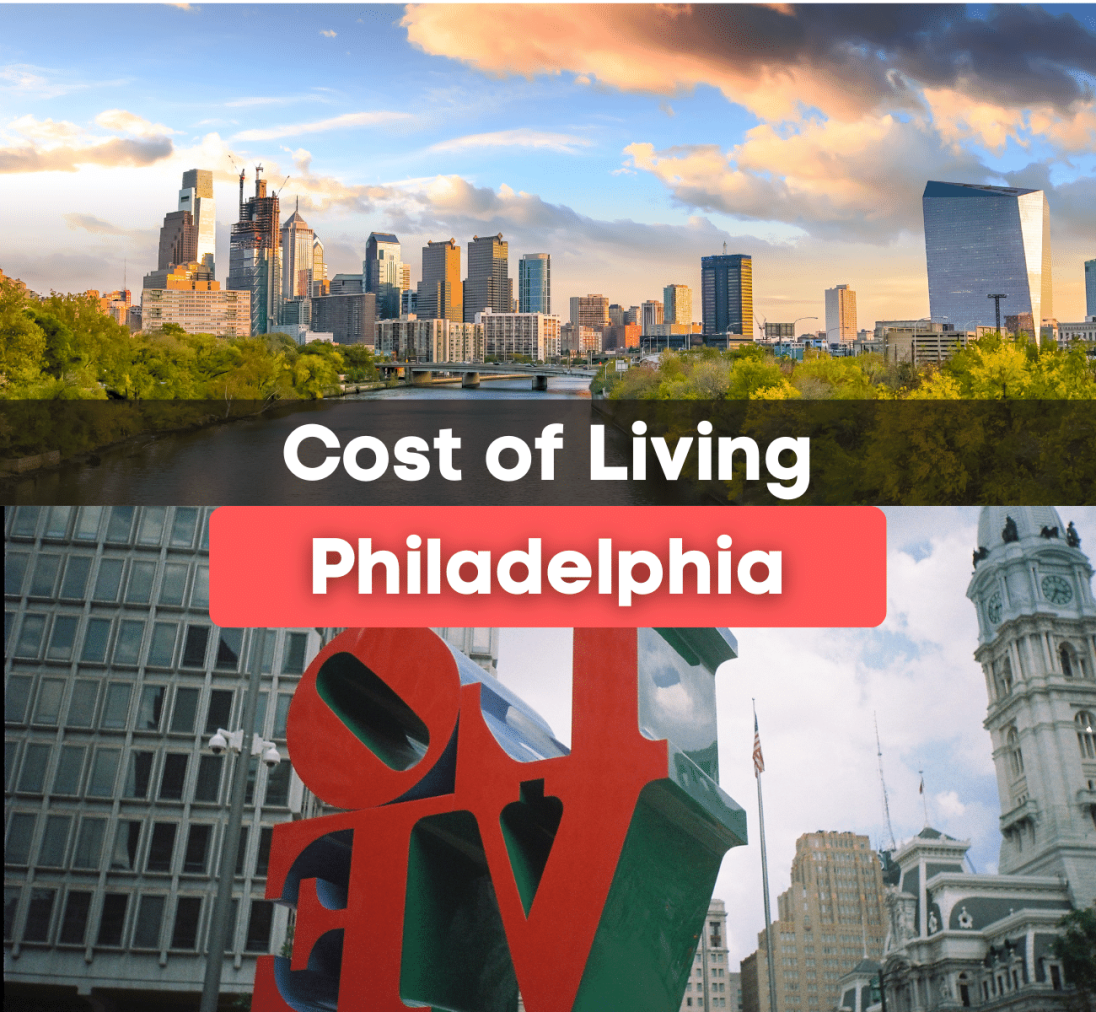
Cost of Living in Philadelphia
Want to know the reality of the cost of living in Philadelphia, PA? Let's take a look at the cost of living, income, real estate, utilities, food, transportation, taxes, and other expenses in Philadelphia.
Philadelphia is known as a large Metropolitan city with tons to offer, from unique and diverse housing, a rich history with important landmarks and attractions, stunning natural areas, a vibrant arts and culture scene, and more it attracts people from all over to move here.
Philadelphia is located in the northeastern part of the country and is in a convenient location between other large urban cities such as New York City and Washington, D.C. With a population of over 1.5 million residents, you get the big-town amenities with more of a small-town feeling.
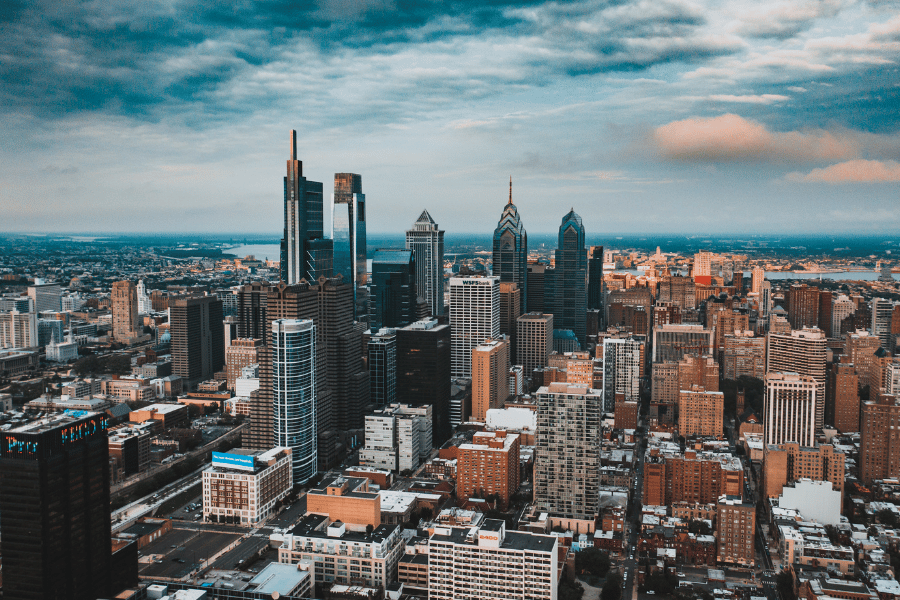
Walking the streets of downtown Philadelphia is like walking from the present to the past, with brick exteriors and rowhouses lining cobblestone roads mixed in with new contemporary high-rises and luxury homes. With such an array of housing options to choose from in a beautiful, enriching city, it is no wonder why so many families, young professionals, and students choose to move here.
Before moving to Philadelphia, you should consider the real cost of living there. Many of the best places to live in Philadelphia have a variance in cost depending upon the real estate, transportation, food, and other expenses that some individuals might not think of before budgeting for their move. Let's take a look at the breakdown of what it costs to live in Philadelphia and what you can expect.
Cost of Living
Philadelphia is known as a large metropolitan city with a lower cost of living. According to Rentcafe, the cost of living in Philadelphia is only 10% higher than the national average while providing residents with all of the thrills that come with living in a big city.
The average cost of living per month is around $4k for a family of four, making it a reasonable area to live if depending upon lifestyle and spending habits. Known as a mediatory area, it is conveniently located near many other large cities and areas of attraction, causing many individuals to want to move here but remains close to other large cities and areas to be able to travel for work, take vacations to exciting locations, or be close to family while spending less.
As a matter of fact, according to Salary.com, the cost of living in Philadelphia is almost 58.8% cheaper than living in its neighboring state of New Jersey. Let's take a look at some of the cost values of living in Philadelphia compared to the national average.
| Cost of Living Item | Philadelphia | National Average |
| Annual Income | $52,649* | $67,521* |
| Rent | $1,149* | $1,163* |
| Home Value | $365.8k* | $467.7k* |
| Natural Gas (Therm) | $1.344 | $1.413 |
| Electricity (kWh) | $0.170 | $0.148 |
| Public Transportation | $96 per month | $483 |
| Gas | $3.595 | $3.55 |
*denoted median instead of average
*data gathered from the Bureau of Labor Statistics (BLS), AAA, United States Census Bureau, and FRED Economic Data
Income
The average median income for a Philadelphia resident is around $52,649, slightly below the national average of $67,521. This means that, on average, individuals living here are making less than the national average, but depending upon age, job, and location, there is some variance of this variable, with most individuals living downtown making more.
The Philadelphia job market primarily thrives off of higher education, manufacturing, food processing, and tourism. With over 36 million tourists visiting each year, the job markets that are dependent upon this influx of people, such as hospitality, food, attractions, and event planners, will see a large increase in sales and money made during the tourist season.
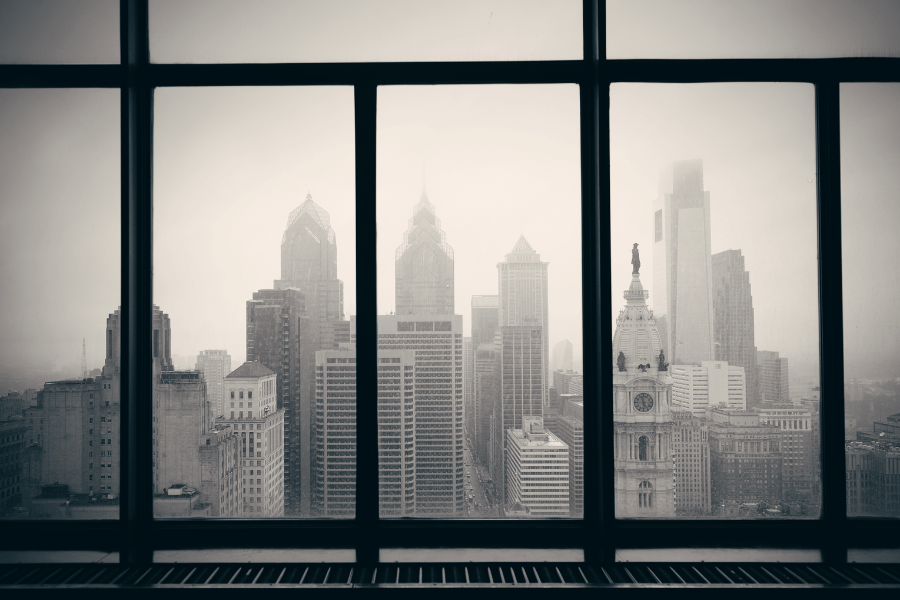
According to the Bureau of Labor Statists (BLS), the current unemployment rate for individuals above the age of 16 years old in Philadelphia is at 4.9%. That is 1.3% higher than the national average of 3.6%, meaning that more people in Philadelphia are unemployed compared to other cities. This correlates directly to Philadelphia's large poverty rate of 22.3% compared to the national rate of 11.6%.
The high poverty rate in Philadelphia means that 22.3% of its residents fall below the poverty rate even if they are employed. This could be partially due to the higher unemployment rate but also to the state of Pennsylvania's extremely low minimum wage of $7.25 per hour, the lowest you can pay an employee in the U.S.
Real Estate
Home values have increased by almost 20% from April 2021 to May 2022 across the United States. In Philadelphia alone, the median home value jumped from $320k in 2021 to around $356k in 2022. With the current trajectory of housing costs staying on the rise, let's take a look at some of the top neighborhoods in Philadelphia and the median home value there.
| Neighborhood | Median Home Value |
| Old City | $440k |
| Fishtown | $375k |
| Washington Square West | $550k |
| Fairmount | $430k |
| Rittenhouse Square | $600k |
| Manayunk | $363k |
| Northern Liberties | $415k |
| Queens Village | $478k |
| Society Hill | $434k |
The architecture in Philadelphia takes after its rich history with many housing options such as townhomes, condos, apartments, and single family homes that have brick exteriors with many windows with shutter panels lining up perfectly across from one another. Another housing style that became very popular, especially in downtown Philadephia was rowhouses. These townhomes were very popular when the city was first being built to fit as many people as possible in its narrow cobblestone streets.
A rowhouse is categorized by multiple one-four-story homes occupying a narrow street front and attached to the adjacent homes on each side. Today, many residents still live inside these colorful and unique rowhouses, while high-rises and luxury complexes are popping up all over as well.
Philadelphia takes pride in its history and old-town feel, with homes taking after some of the original designs. But, in the suburbs and densely populated neighborhoods alike, you can easily find a newer construction home or rental unit that has more contemporary designs as well.
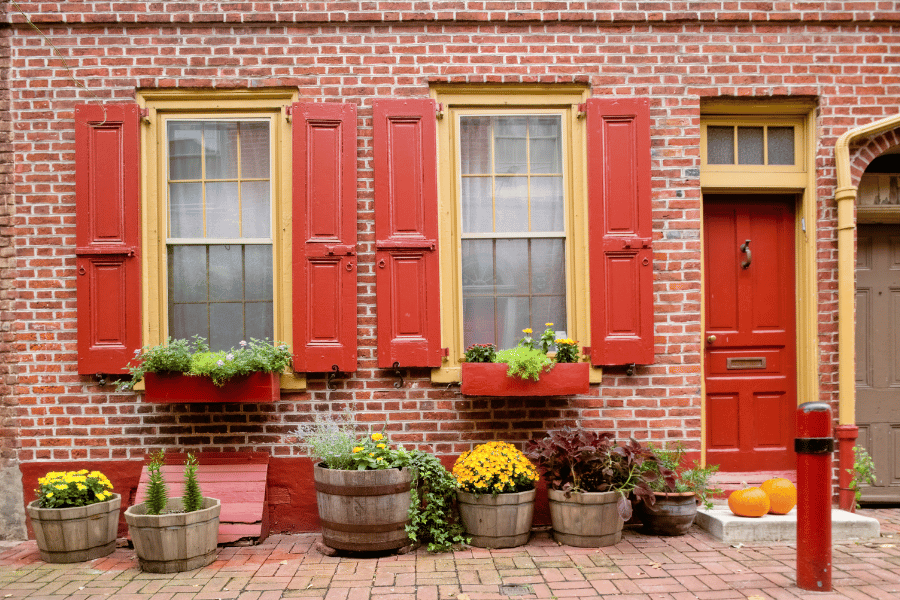
Utilities
The average cost of utilities in Philadelphia per month is around $200 on top of rent or mortgage costs. When most people think of utilities, they think of gas, electricity, and water costs. But, some homes and rental units have more utility costs than just that, such as trash removal, WiFi, cable, recycling, sewer, and a doorman or mailroom access.
In Philadelphia, the average cost of electricity (kWh) is $0.170, and the average cost of natural gas (Therm) is $1.334. With the cost of natural gas being slightly below the national average and electricity being about the same, you shouldn't be really spending much more on these basic utilities in Philadelphia than in any other state.
Other expenses to consider on top of your housing costs are amenities as well. Some apartment complexes and housing developments or communities have additional costs to utilize their facilities or additions on top of your monthly bills. These amenities include pools, parking garages, gyms, rooftop/garden access, laundry, dog baths, visitor parking, etc. Although some complexes just tack on these expenses to rent, some charge additional costs for these amenities, so make sure you read the entire rental or homeowner agreement before deciding on your new home.
Food
A family of four is estimated to spend over $1,600 on food alone per month in Philadelphia. With food costs rising over the entire country, the overall food costs in major cities like Philadelphia show it the most.
An average meal when eating out in Philadelphia for a single person is around $25-$50, with a large range depending upon the location of the restaurant, style, type of food, and if you include drinks. If you compare this to other large cities, though, the cost is actually lower when dining out. Another aspect to consider when looking at food costs in Philadelphia is the cost of getting it. When living in a primarily public transportation city, getting groceries can sometimes be a hassle of having to carry everything onto the train or bus and then home instead of putting it directly from the cart to your car.
According to the BLS, 44% of all food spending for individuals in the U.S. was on food away from home. This makes sense due to the fact that many people use eating out as a way to socialize, save time, and meet new people. But, the cost of eating out, especially in cities, is much more expensive than purchasing ingredients to eat at home, even it if is more of a hassle. If you are looking to save money and time but still eat at home, there are also many food delivery services now for pre-packaged meals, such as AmazonFresh, HelloFresh, Misfit Market, FACTOR, and more.
Transportation
Around 25% of the Philadelphia population utilizes public transportation systems every day. But with over 253k people commuting into the city each day for work, the Southeastern Pennsylvania Transportation Authority (SEPTA) system serves over 4 million people in five different counties in and around Philadelphia.
Utilitizing the public transportation system is definitely the cheapest and most efficient way to travel in Philadelphia. With an average monthly cost of only $96, the SEPTA is one of the largest transit systems and is considered one of the most comprehensive bus/subway/commuter-rail systems in the United States.
If you do choose to own your own vehicle in Philadelphia, you have to consider the cost of gas, insurance, and parking. The average cost of gas right now in Philadelphia is around $3.594 per gallon, making it slightly over the national average of $3.55 per gallon. With many people traveling to and from the city as well as through to other cities and states, Philadelphia is ranked the fourth most traffic-congested city in the nation. Along with traffic being bad and gas prices being elevated, the roads in and around Philadelphia are also known to have many potholes and issues from weather damage and just constant use of so many cars and semi-trucks.
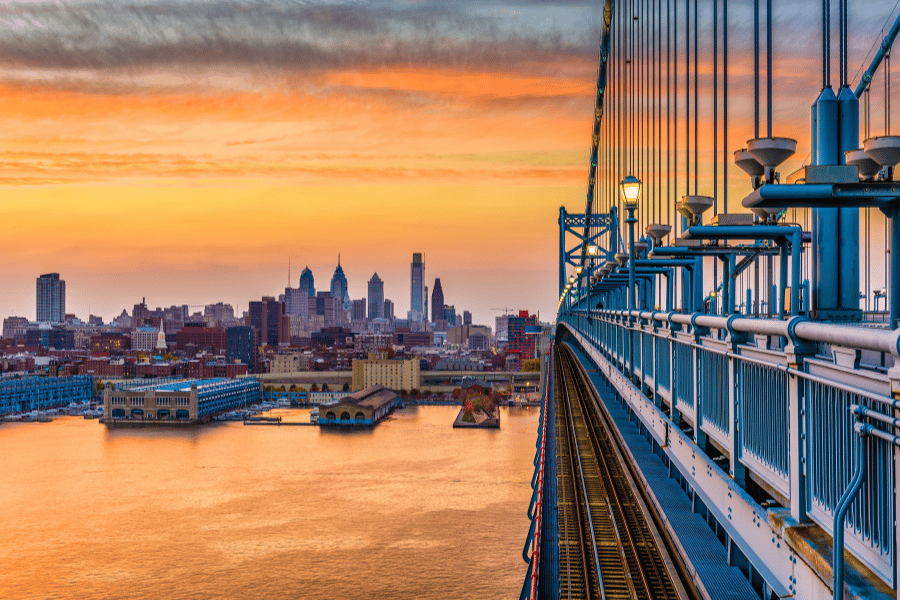
If you are living in one of the beautiful neighborhoods in downtown Philadelphia, parking is unfortunately very hard to come by and expensive. An average parking meter is going to cost you $2 an hour, and parking in a garage is going to be $8-$35 a day.
Keeping your own vehicle at your home is also an additional cost and sometimes not even available due to many of the homes being on very small and narrow roads. An average resident in Philadelphia will spend around $600 to keep their car in a reserved spot or garage per month. So, before bringing your car with you when moving to Philadelphia, consider the extra costs or hassles.
Taxes
The national average sales tax is between 4-7%, with Pennsylvania at a current percentage of 6%. This means that sales taxes here are much higher than in other areas around the nation, sometimes causing the overall cost of items to increase. But, unfortunately, sales tax is not the only change in taxes you have to worry about when moving to a different state. Let's take a look at some of the other tax facts in Pennsylvania.
If you are making a move to Philadelphia, PA:
- The average property tax in Pennsylvania is 1.36%.
- The tax rate for the Pennsylvania inheritance tax is 4.5% for direct descendants, 12% for transfers to siblings, and 15% for non-heirs.
- Pennsylvania makes no provision for capital gains
- There is no estate tax in Pennsylvania
FAQ
Is Philadelphia a good place to live?
Philadelphia is known for its many things to do and see, including some of the sights and artifacts from our country's history. From some of the best food and sports to a thriving arts and culture scene, people move here to experience everything the city has to offer at a lower cost of living.
Is Philadelphia expensive?
The cost of living in Philadelphia is 10% higher than the national average but lower than many other large cities in the U.S. With an average monthly expenditure of $4k for a family of four, it is a reasonable price to live in such a vibrant and accessible place.
What salary do I need to live in Philadelphia?
The average salary in Philadelphia is around $52.6k with variance depending upon what job industry you are in. If moving to Philadelphia, it is smart to map out all of your predicted expenses you gathered from the information above and look for a salary that fits the 50/30/20 rule; 50% of your income goes towards essentials such as rent, food, and transportation, 30% goes towards non-essentials such as sporting events and eating out, and 20% going into your savings.
Cost of Living in Philadelphia, PA- Final Thoughts
Philadelphia is a great place to live, with diverse neighborhoods and housing options in a city full of important American history, art & culture, recreational activities, and fun things to do and see. Living near some of the biggest metropolitan cities with a lower cost of living and a more small-town feeling, Philadelphia is a great place for families, young professionals, college students, and those wanting a quieter living but commuting to another city for work.
If you or anyone you may know is moving to Philadelphia, PA make sure to contact us here so that we can get you connected with one of our Realty Specialists. Whether you want to live in the heart of the city or in a calm and charming neighborhood just outside of it, we will work with you to find the perfect home. No matter your budget, style preferences, or needs, we will be with you every step of the way.

Ryan Fitzgerald
Hi there! My name is Ryan Fitzgerald, and I am a REALTOR®. My goal is to help you learn more about real estate through our Real Estate Blog! Hopefully, you enjoyed the above blog post and it found a way to provide help or value to you. When you're ready to buy or sell a home of your own let us know here. Please feel free to join the conversation by dropping us a comment below.

